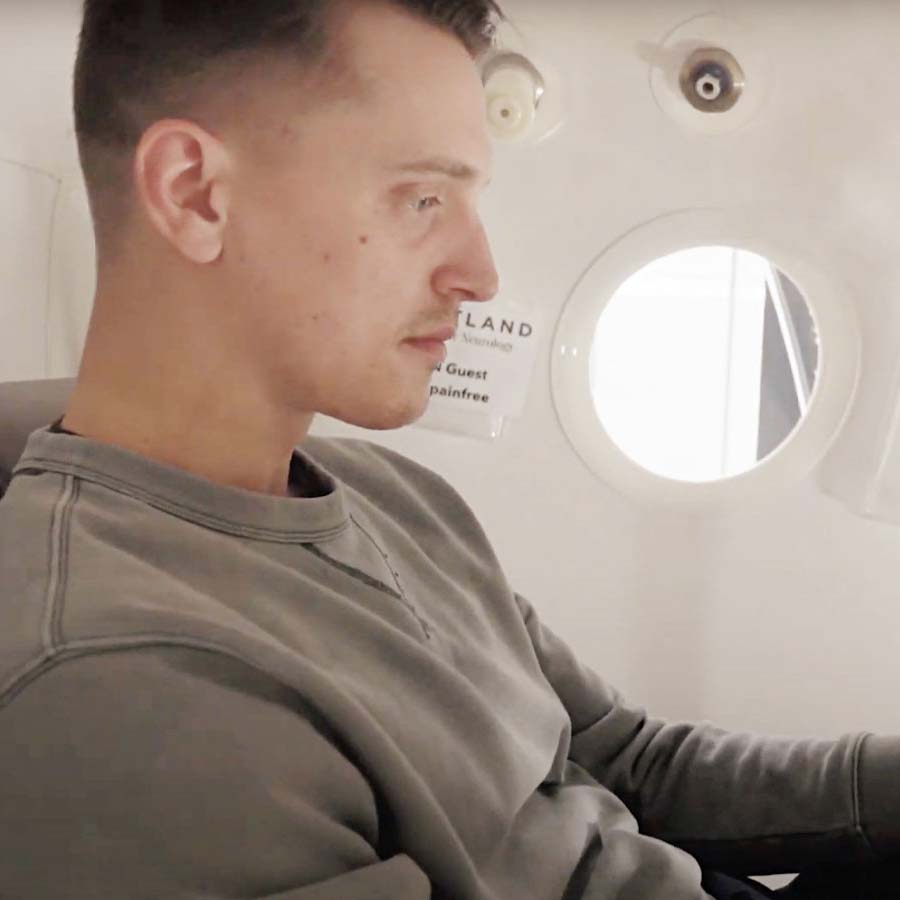
Improving Athletic Performance with Hyperbaric Oxygen Therapy
Athletics require healthy tissue function and recovery to optimize performance and quickly heal from repetitive injuries. Hyperbaric oxygen therapy not only enhances brain function to create fast signaling and coordination of our muscles and joints, it also promotes an accelerated rate of healing of the body as well. This allows athletes to train harder and longer and compete at a high level.
Athletics require healthy tissue function and recovery to optimize performance and quickly heal from repetitive injuries. Hyperbaric oxygen therapy not only enhances brain function to create fast signaling and coordination of our muscles and joints, it also promotes an accelerated rate of healing of the body as well. This allows athletes to train harder and longer and compete at a high level.
Common benefits
Hyperbaric oxygen therapy can provide athletes with a wide range of physical and mental benefits, but the most common benefits include:
- Reduced Muscle Pain
- Reduced Joint Pain
- Better Pain Regulation
- Improved Brain Function
- Faster Healing and Recovery
How can hyperbaric oxygen therapy help with Athletics?
It is essential that our brain sends fast signals to our muscles and joints for action and reaction. In addition, we also need to pump blood flow quickly and efficiently to our tissues through our autonomic nervous system, which resides in our brain and is a major area that can be optimized through hyperbaric oxygen therapy.
A healthy ANS is absolutely necessary for optimizing athletic performance and recovery. The ANS controls involuntary functions such as heart rate, blood pressure, breathing, and digestion. It maintains proper blood circulation to the areas of our brain and body when and where we need it. We only have 5-6 liters of blood, which is not enough to be everywhere at once. If you stood up and didn’t have a functioning ANS, all of your blood would pool in your legs and gut and wouldn’t reach your brain or other areas needed. You would fatigue quickly and become anaerobic (low oxygen to tissue), causing a lower threshold until muscle failure.
Additionally, hyperbaric oxygen therapy decreases pain and improves wound healing by promoting the proliferation of stem cells, decreasing inflammation, stimulating angiogenesis (new blood vessel formation), detoxification, fibroblast proliferation (critical in wound healing), and increases oxygen concentrations in our bloodstream that improves distribution of oxygen to our cells for healing and function.
It’s also important to note that we don’t sense or understand pain until it reaches the brain, therefore a healthy brain is essential in pain management. Hyperbaric oxygen therapy has been shown to improve brain function, which improves our ability to regulate pain.
Other benefits of hyperbaric oxygen therapy
Hyperbaric Oxygen Therapy is a quickly evolving science and the full benefits are continually being discovered. HBOT increases the amount of oxygen in our bloodstream and increases circulation to deliver abundant amounts of oxygen to the brain, supersaturating our tissue with energy needed for healing, growth, and repair. This creates a healthier environment for our brain to work and control our autonomic nervous system. Because of this, the benefits of hyperbaric oxygen therapy can be found in all parts of the body and in a wide range of ways. Some benefits can include:
- Faster healing from trauma
- Reduced inflammation
- Increased stem cell release
- Improved brain health
- Detoxification
- Improved autonomic nervous system function
- …and many more
Learn more about the many benefits of HBOT and how it works.
Supporting Research
- Studies show that Hyperbaric Oxygen Therapy significantly increases ATP and energy production in muscle tissue as seen in the Journal of Clinical Neuroscience.
- A recent study that evaluated injuries of athletes showed that HBOT was successfully able to reduce pain, improving general activity, mood, walking ability, sleep, normal work, and enjoyment of life. It also reduced serum levels of creatinine phosphokinase (CK), myoglobin (MB), glutamic oxaloacetate transaminase (GOT), and other muscle-cell proteins in the bloodstream that could be an indication of recovery from muscular injury.
- Recently, separate studies from Moghadam et al. and Chen et al. both reported that hyperbaric oxygen therapy (HBOT) could be effective in early recovery from exercise-related muscular injury due to its beneficial effect on cell recovery and tissue repair.
- Moghadam et al. suggested this as a possible treatment for sports musculoskeletal injuries as it can enhance oxygen delivery, reduce edema and pathologic inflammation, and mitigate ischemia/reperfusion injury.
- Chen et al. applied HBOT treatment to 41 athletes with exercise-related muscle damage and reported that muscle damage indices like CK, glutamic oxaloacetate transaminase (GOT), and myoglobin were significantly decreased.
- Woo et al. concluded HBOT treatment in the recovery phase had a positive impact on relieving the inflammatory response and muscle damage after exercise.
- HBOT remains one of the safest therapies used today.
Sources
- Chen-Yu Chen, Wen-Yi Chou, Jih-Yang Ko, Mel S. Lee, Re-Wen Wu, “Early Recovery of Exercise-Related Muscular Injury by HBOT”, BioMed Research International, vol. 2019, Article ID 6289380, 10 pages,2019. https://doi.org/10.1155/2019/6289380
- Kurt B, Kurt Y, Karslioğlu Y, Topal T, Erdamar H, Korkmaz A, Türközkan N, Yaman H, Odabaşi Z, Günhan O. Effects of hyperbaric oxygen on energy production and xanthine oxidase levels in striated muscle tissue of healthy rats. J Clin Neurosci. 2008 Apr;15(4):445-50. doi:
- Woo J, Min JH, Lee YH, Roh HT. Effects of Hyperbaric Oxygen Therapy on Inflammation, Oxidative/Antioxidant Balance, and Muscle Damage after Acute Exercise in Normobaric, Normoxic and Hypobaric, Hypoxic Environments: A Pilot Study. Int J Environ Res Public Health. 2020 Oct 10;17(20):7377. doi: 10.3390/ijerph17207377. PMID: 33050362; PMCID: PMC7601270.
- Moghadam N., Hieda M., Ramey L., Levine B.D., Guilliod R. Hyperbaric Oxygen Therapy in Sports Musculoskeletal Injuries. Med. Sci. Sports Exerc. 2020;52:1420–1426. doi: 10.1249/MSS.0000000000002257.
- Heyboer M 3rd, Sharma D, Santiago W, McCulloch N. Hyperbaric Oxygen Therapy: Side Effects Defined and Quantified. Adv Wound Care (New Rochelle). 2017 Jun 1;6(6):210-224. doi: 10.1089/wound.2016.0718. PMID: 28616361; PMCID: PMC5467109.
Contact Us
Ready to discuss how hyperbaric oxygen therapy can help you heal, rebuild and restore health?
Contact Us